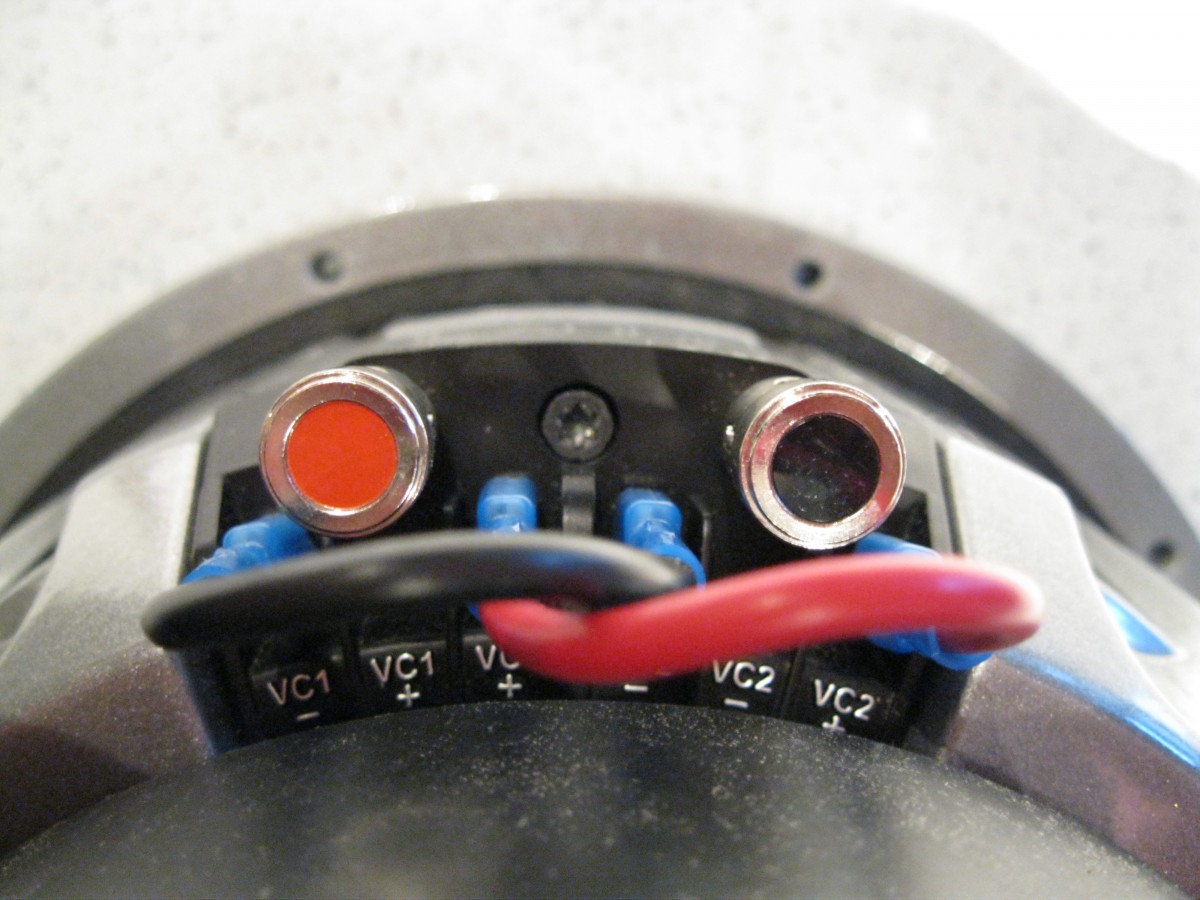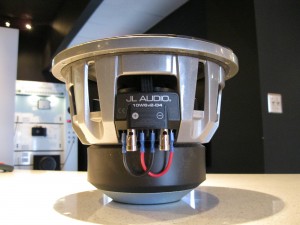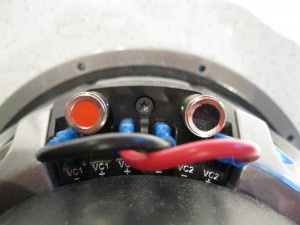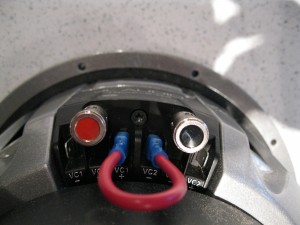Ohm. What is an ohm? How does a 2 ohm load effect an amp? How does a 1 ohm load effect an amp? Or a 4 ohm load?
The ohm load effects power output in amplifiers as well as sound quality.
Subwoofers can measure 2 ohm, 4 ohm or 1 ohm. 2 ohm, 4 ohm and 1 ohm impedance’s will make the same amplifier put out different amounts of power and can greatly affect the way your car stereo system sounds and performs.
This article discusses the various subwoofer configurations available such as single voice coil 2 ohm, single voice coil 4 ohm, dual voice coil 2 ohm, dual voice coil 4 ohm, as well as series and parallel wiring and how each will effect the measurement of ohms.
Estimated read time: 3 minutes 45 seconds. Want to read later?
All speakers have a measurement of resistance, called impedance which is measured in ohms. Car stereo speakers are typically 4 ohm. You will find car stereo subwoofers in a variety of configurations like single voice coil 2 ohm, dual voice coil 2 ohm, single voice coil 4 ohm, and dual voice coil 4 ohm.
Dual voice coil means the subwoofer has two positives and two negatives, which give you the flexibility of wiring the subwoofer two different ways giving you two options for final impedance. These variations do not make one speaker more powerful than another despite what many consumers may think. However, the varying impedance will make a difference in what type of output an amplifier will have.
As the ohms drop, the amplifier will unleash more power, but with less control. This is an important aspect to remember. Failing to understand this concept is probably the main cause of self installed amplifiers shutting down and going into protection mode.
You will notice, when you buy an amplifier, or are looking at the specifications of an amplifier, you will typically find 2 or more ratings. One output at 4 ohms, and another output at 2 ohms. The output at 2 ohms is always higher because when the resistance is lower, you allow more output. All mono amplifiers are stable at 2 ohms, very few are stable at 1 ohm.
So what kind of speakers can we hook up to a mono amplifier? Let’s use an Alpine MRP-M500 mono amplifier as an example. This amp is rated at 300 watts at 4 ohms and 500 watts at 2 ohms. In order for us to get maximum output out this amplifier, using only one subwoofer, we would have to use either a single voice coil 2 ohm subwoofer or a dual voice coil 4 ohm subwoofer wired in parallel.
If we had two subwoofers, we would need each subwoofer to be a single voice coil 4 ohm wired in parallel to the amplifier. Or we could have two dual voice coil 2 ohm subwoofers with each woofer’s voice coil wired in series, then paralled to the amplifier.
Let’s take a look at this JL Audio 10W6 which is a Dual Voice Coil 4 ohm subwoofer as an example for the different wiring schematics on Series and Parallel:
Parallel is when you tie two positive and negative terminals together wiring them positive to positive, negative to negative, and then wire that straight into the positive and negative terminal of the amplifier. When you wire speakers in parallel, you are cutting the impedance in half. So a dual voice coil 4 ohm subwoofer wired in parallel is now measuring a 2 ohm load:
To understand Series, visualize a dual 4 ohm voice coil. You have two terminals side by side: Positive and Negative for voice coil #1 and then Positive and Negative for voice coil #2. To series this subwoofer, you would have to connect positive from voice coil #1 to the amplifier, then connect negative from voice coil #1 to the positive of voice coil #2, and then connect negative from voice coil #2 to the amplifier. This doubles the impedance. If we do this to a dual voice coil 4 ohm subwoofer, the impedance will be 8 ohms:
The problem that many people run into, is running an amplifier with the incorrect impedance. Let’s say we were to use that same dual voice coil 4 ohm subwoofer with a 2 channel amp bridged. When you bridge a 2 channel amp, you hook up left positive and right negative. You might assume you are simply wiring it as a mono amp, which in a sense you are. The important difference that is often overlooked is when you bridge an amplifier, the amp sees half the impedance at the terminal which means that 2 channel amp would see only 1 ohm. This is extremely low for a 2 channel amplifier, it would be unleashing a lot of more power than it was designed to along with very little control which would in turn cause the amplifier to heat up very quickly and shut down going into protection mode. Over time this will damage the amplifier.
For a 2 channel amp to work properly bridged, it needs to see an 8 or 4 ohm load at the terminal, this will ensure the amplifier will work properly and not overheat and shut down.
If you own an amp and you’re in the market for subwoofers, make sure you know what final impedance your amp needs to see. And vice versa, if you own subs and you’re in the market for an amp, know what impedance your subs are so that you purchase an amplifier that will give you optimum performance. It helps to talk to your local independent car stereo shop, but if there aren’t any in your area, just email me and I’ll make a recommendation for you. If you enjoyed reading this post, please spread the love. Tweet it, like it, stumble it, or use any other social sharing weapon of choice. Thanks for reading!



